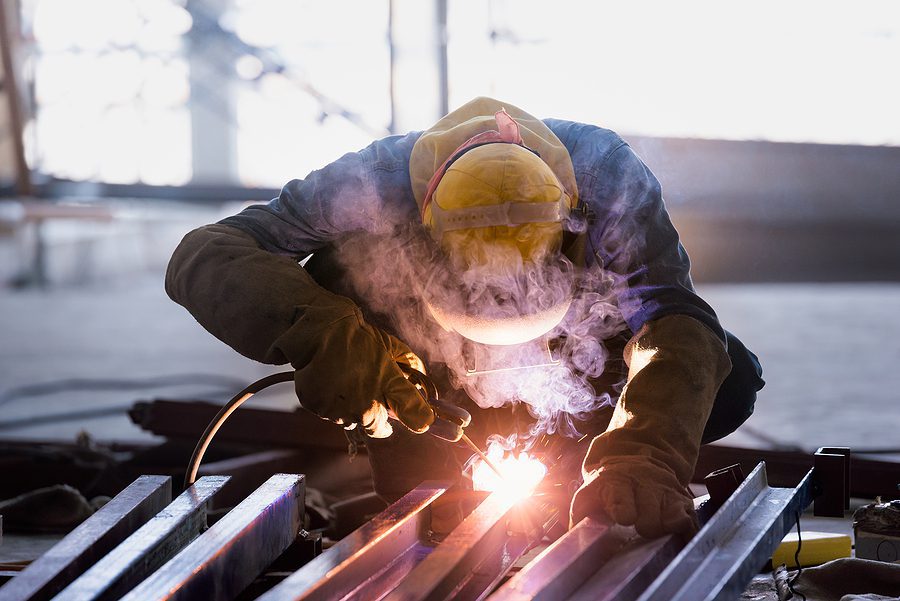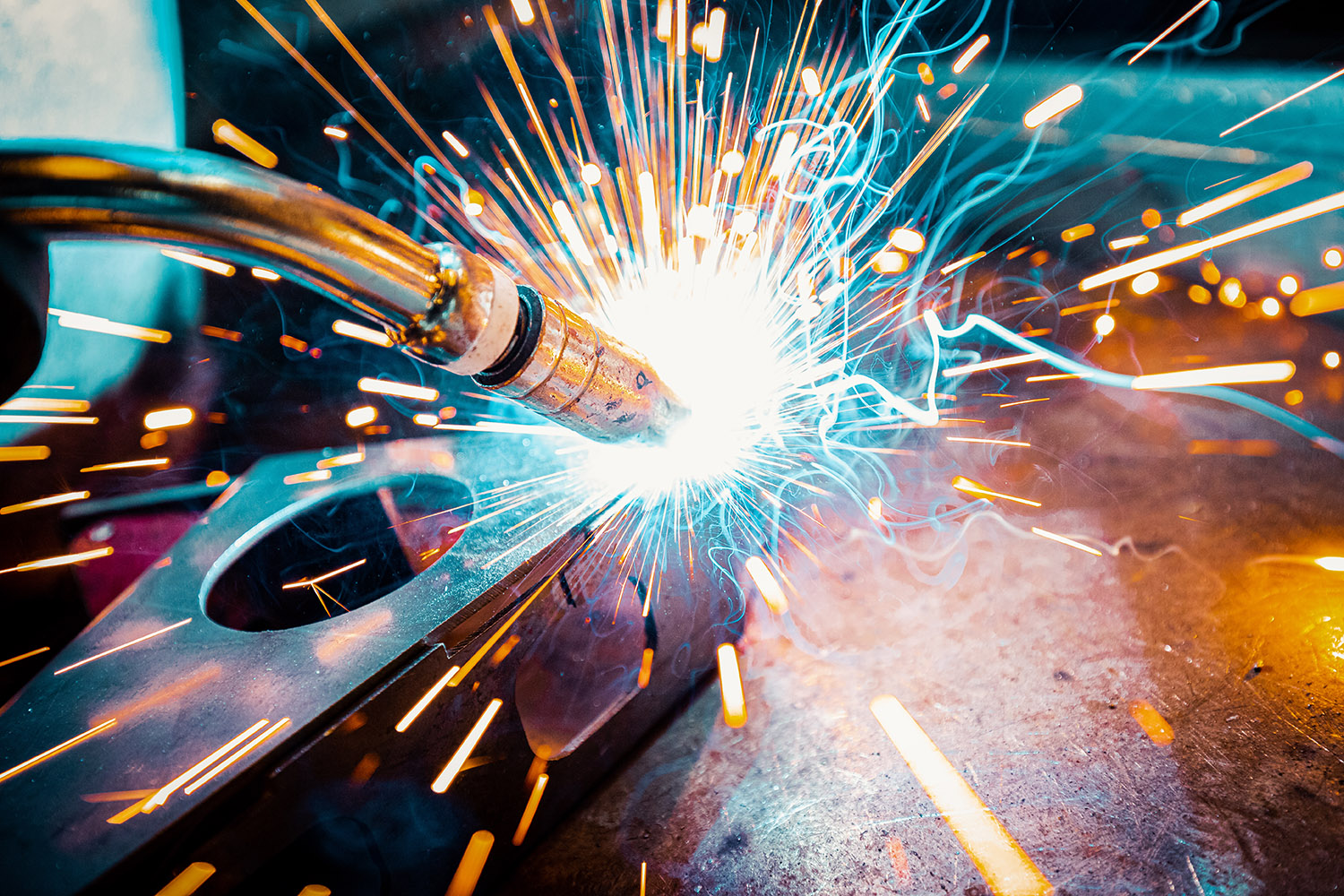All Concerning Welding: Key Insights Into Techniques and Finest Practices for Success
Welding encompasses a variety of strategies, each fit for particular materials and applications. Comprehending these approaches, such as GMAW, SMAW, and TIG, is crucial for attaining optimal outcomes. The appropriate devices and security methods can not be ignored. As preparation and repairing play important duties in the welding procedure, grasping these aspects can considerably enhance the high quality of the last product. What are the key variables that assure an effective weld?
Recognizing Various Welding Methods
Welding techniques incorporate a variety of methods, each fit to specific applications and materials. Amongst one of the most usual strategies are Gas Metal Arc Welding (GMAW), Protected Steel Arc Welding (SMAW), and Tungsten Inert Gas Welding (TIG) GMAW, likewise referred to as MIG welding, is preferred for its speed and flexibility, making it perfect for slim materials. SMAW, or stick welding, is favored for its simplicity and performance in outside atmospheres, specifically with thicker steels. TIG welding provides accuracy and control, making it ideal for elaborate job and non-ferrous steels (Montana Mobile Welding and Repair Belgrade Fabrication). Each method has its distinct benefits and factors to consider, allowing welders to pick the very best method based on the task's needs, material kind, and desired outcomes. Comprehending these methods is necessary for successful welding
Essential Welding Devices and Devices
While numerous welding strategies need particular skills, the ideal tools and devices are just as crucial for accomplishing quality results. Crucial welding devices consists of welding makers, which vary depending upon the method-- such as MIG, TIG, or stick welding. Protective gear, consisting of aprons, headgears, and handwear covers, warranties safety and comfort during the process. On top of that, fixtures and clamps assist secure products in position, ensuring precision in welds. Consumables like welding rods, cord, and protecting gas are likewise crucial parts that affect the high quality of the weld. Devices such as grinders and cutters promote surface prep work and post-weld completing, adding to a professional result. Investing in top quality tools ultimately improves the efficiency and performance of welding jobs.
Safety And Security Practices in Welding
Proper safety and security techniques are important in the welding market to safeguard workers from prospective threats. Welders must put on proper individual protective tools (PPE), including safety helmets with proper shading, handwear covers, and flame-resistant apparel. Ample ventilation is crucial to reduce exposure to hazardous fumes and gases produced throughout the welding process. Furthermore, employees need to be trained in the correct handling of welding tools to prevent crashes. Fire precaution, such as keeping combustible materials far from the welding area and having fire extinguishers conveniently offered, are required. Regular examinations of tools and workspaces can assist determine prospective hazards before they bring about mishaps. By adhering to these safety practices, welders can produce a safer working atmosphere and minimize risks related to their profession.
Readying Products for Welding
Preparing products for welding is an essential step that greatly affects the top quality and integrity of the end product (Welding). Appropriate prep work entails cleaning the surfaces to get rid of impurities such as corrosion, dust, and oil, which can endanger the weld. Techniques such as grinding, sanding, or utilizing solvents are typically utilized to accomplish a tidy surface area. Furthermore, ensuring that the products fit with each other comfortably is important; gaps can lead to weak welds. It's also important to think about the alignment and positioning of the elements, as this will certainly affect the simplicity of welding and the final end result. Ultimately, cordless welder picking the appropriate filler material and making sure compatibility with the base steels is vital for attaining solid, durable welds
Tips for Achieving High-Quality Welds
Attaining top notch welds requires focus to information and adherence to finest techniques throughout the welding process. Appropriate joint prep work is necessary, making certain surfaces are totally free and tidy from pollutants. Selecting the suitable filler material and welding technique based on the base metals is important for optimal bonding. Keeping constant traveling rate and angle while welding can stop problems and advertise harmony. Furthermore, regulating warmth input is crucial; too much warm can cause bending and damaged joints. If necessary, routinely examining the welds throughout the process enables for immediate adjustments. Using ideal post-weld therapies, such as cleansing and tension alleviation, can boost the sturdiness and stability of the weld, eventually making sure an effective result.
Repairing Common Welding Issues
Welding often offers obstacles that can affect the top quality and stability of the end product. Typical concerns such as porosity, inconsistent weld beads, and overheating can develop, each calling for details repairing methods. Understanding these troubles is important for welders to enhance their abilities and achieve optimal results.
Porosity Troubles Explained
Although porosity can usually be forgotten, it continues to be a vital problem in welding that can compromise the stability of a completed item. Porosity describes the existence of tiny gas pockets within the weld grain, which can compromise the joint and lead to premature failure. This trouble normally emerges from impurities, wetness, or incorrect shielding gas insurance coverage throughout the welding process. To minimize porosity, welders should confirm that the base products are completely dry and tidy, make use of appropriate protecting gases, and preserve consistent welding specifications. Consistently evaluating the devices and environment can also assist determine potential problems prior to they materialize in the weld. Dealing with porosity efficiently is essential for achieving strong, durable welds that satisfy high quality criteria.

Inconsistent Weld Beans
Inconsistent weld grains can greatly affect the high quality and strength of an ended up item. Various variables add to this problem, consisting filler metal of incorrect traveling speed, inaccurate amperage setups, and inconsistent electrode angles. When the welder moves as well swiftly, a grain may show up narrow and lack infiltration, while relocating as well gradually can cause too much accumulation. In addition, making use of the incorrect amperage can result in either damaging or too much spatter, both of which concession weld stability. The welder's technique, such as irregular torch motion, can additionally lead to unequal grain look. To minimize these troubles, welders ought to concentrate on keeping consistent, controlled movements and making sure correct equipment setups to accomplish harmony in their welds. Uniformity is vital to attaining reliable and solid welds.
Getting Too Hot and Warping Issues
Too much warmth throughout the welding process can cause significant getting too hot and deforming issues, influencing the architectural integrity of the workpiece. These issues frequently materialize as distortion, which can compromise alignment and fit-up, making more assembly challenging. Elements adding to overheating include the choice of welding criteria, such as voltage and take a trip speed, as well as the kind of product being bonded. To reduce these concerns, welders need to preserve consistent travel speed and ideal warm input while checking the work surface temperature. In addition, pre-heating or post-weld heat therapy can assist ease stress and anxieties brought on by quick cooling - Montana Mobile Welding and Repair Belgrade Fabrication. Normal inspection description and adherence to ideal techniques are necessary in stopping overheating and guaranteeing the longevity and integrity of welded structures
Frequently Asked Questions
What Are the Profession Opportunities in the Welding Industry?
The welding industry uses diverse profession possibilities, consisting of settings as welders, teachers, inspectors, and engineers. Experts can operate in manufacturing, building and construction, aerospace, and automobile fields, benefiting from strong need and competitive wages in various functions.
Just How Can I Boost My Welding Rate Without Compromising Quality?
To enhance welding rate without giving up quality, one need to exercise effective techniques, keep tools, enhance setups, and improve hand-eye control. Routine training and seeking feedback can additionally significantly add to achieving quicker, high-grade welds.
What Accreditations Are Available for Welders?
Numerous certifications exist for welders, including those from the American Welding Culture (AWS), the National Facility for Building Education and Research Study (NCCER), and different industry-specific organizations. These credentials improve employability and show ability efficiency.
How Does Welding Affect the Features of Metals?
Welding affects the properties of metals by modifying their microstructure, which can lead to modifications in ductility, stamina, and hardness. Warmth input and air conditioning prices throughout the procedure considerably affect these material qualities.
Can I Bonded Dissimilar Metals Together?
